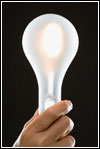Change of Address Checklist
Tuesday, January 28th, 2014 Moving is one of those necessary and stressful life events we all experience. If you are moving to or from Spruce Grove, Stony Plain, Parkland County or the Edmonton region, you’ll need to pass on your new address to many people, businesses, organizations, etc. The list below will ensure you don’t forget anybody!
Moving is one of those necessary and stressful life events we all experience. If you are moving to or from Spruce Grove, Stony Plain, Parkland County or the Edmonton region, you’ll need to pass on your new address to many people, businesses, organizations, etc. The list below will ensure you don’t forget anybody!
Government Agencies
(information courtesy of Service Canada:
☐ Canada Post (visit your local post office or change your address online)
☐ Alberta Motor Vehicle Registry (driver’s licence and vehicle registrations)
☐ Employment Insurance, if you are receiving benefits
☐ Canada Pension Plan / Old Age Security, if you are receiving benefits
☐ Canadian Firearms Centre, if you have a firearms licence.
☐ Any other government or local authorities for any additional licences you may have (e.g. hunting licence, business licence, etc.)
☐ Passport: Did you know that you don’t have to inform anybody official to change the address on your passport? Passport Canada says: “A change of address does not invalidate a passport. Please cross out the old address on page 4 and write the new one in the space above the old address. Do not use correction fluid. If the space in the passport is insufficient, write the new information on a separate piece of paper and insert it into the passport.”
Utilities & Home Services
☐ Electric
☐ Gas
☐ Water
☐ Garbage, recycling
☐ Telephone / Mobile
☐ Cable, satellite
☐ Internet
☐ Newspaper delivery
☐ Water delivery / Water treatment
☐ Housecleaning services
☐ Lawn / Garden services
☐ Pool services
☐ Snow removal services
☐ Alarm or security company
Health Care & Personal Services
☐ Doctors / Health clinics
☐ Dentist, orthodontist, etc.
☐ Chiropractor, physical therapist, massage therapist, personal trainer, etc.
☐ Optometrist, optician, etc.
☐ Pharmacy
☐ Babysitter, day care
☐ Diaper service
☐ Barber / Hairstylist
☐ Veterinarian, pet care providers (kennels, groomers, etc.) (Tip: Get vet to check that the address attached to your pet’s microchip is up-to-date)
Financial & Legal
☐ Accountant
☐ Banks (transfer accounts to a branch near your new home, order new cheques, re-direct automatic deposits and payments)
☐ Lenders and loan companies (mortgage, auto, student loan, home equity)
☐ Credit card companies, department store credit card companies (Tip: Put a “travel notification” on your credit cards when leaving home, especially if moving across country or out of the country.)
☐ Financial advisor, investment firms, broker
☐ Retirement plan holders
☐ Insurance companies (home, life, health, auto. Tip: Check on your property insurance coverage for the time your possessions are on the move)
☐ Lawyer
Employment & Education
☐ Old employers
☐ New employers
☐ Alumni associations
☐ Your children’s schools, colleges, private lessons or extracurricular activities (sports, scouting, etc.)
☐ Public library, if you are a member
Clubs & Organizations
☐ Social
☐ Athletic (gym memberships)
☐ Religious (churches)
☐ Civic & political (community associations, political parties)
☐ Business & professional
Subscriptions
☐ Magazines, newspapers
☐ Mail order houses, catalogues
☐ Book, music clubs
☐ Loyalty programs (AirMiles, etc.)
☐ Charities
☐ Memberships with benefit plans (such as AMA/CAA, CARP, etc.)
☐ Museums, theaters, etc. (seasons tickets)
☐ Holders of warranties (auto, home equipment, etc.)
And of course, don’t forget to pass on your new address to family and friends! Tip: Give a neighbor or your landlord a printed card with your new address so they can forward information and mail on to you.
Tip: In the months leading up to your move, keep track of who sends you mail regularly and collect any change of address forms that come with your subscriptions. You can then customize your own change of address list.
Tip: You probably know already that if you are moving to study or work, many things may be tax deductible such as: fees for the sale of your house (real estate agents’ commissions), lawyers’ fees for the purchase of your new house, mortgage penalty fees for selling your house before the end of the mortgage term, cancellation fees for ending the lease prematurely at your rented residence, moving fees or storage fees, subsistence fees (meals and lodging) near your former or new residence, etc. Check with your accountant or income tax preparer.
The above works for your physical address, but what about your online presence?
- Change the postal code or city you’ve programmed into web-based services you subscribe to, such as weather reports, local news reports, coupon services like Groupon and the like.
- Once you’ve settled into your new home, let your online correspondents know you’ve arrived by posting a quick Facebook or Twitter message, or sending out a short email.
- If you’ll be changing your email address, keep track of who sends you emails so that you can pass on your new one.
Need more help with moving? Check out my Moving Guide for a detailed checklist of everything you need to do.
I welcome your comments and questions! Call or text me at 780-910-9669, email me at barry@barryt.ca or contact me here.





